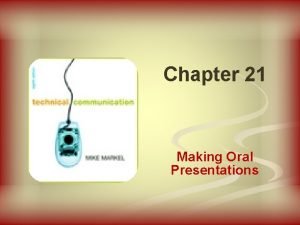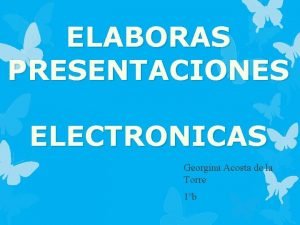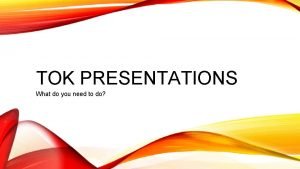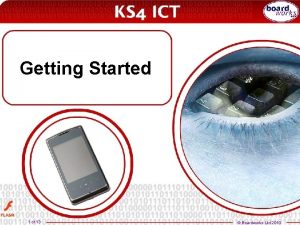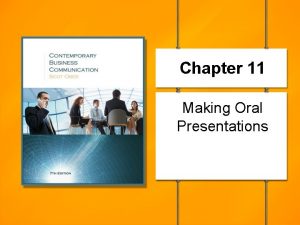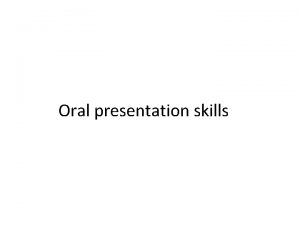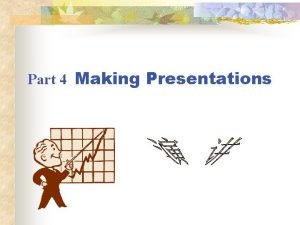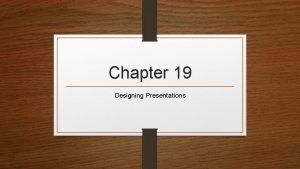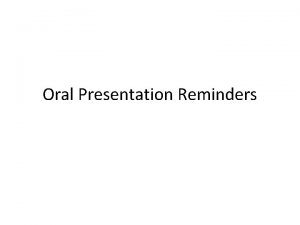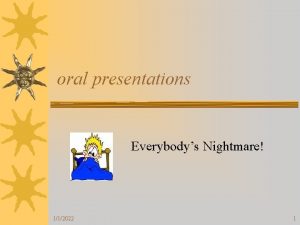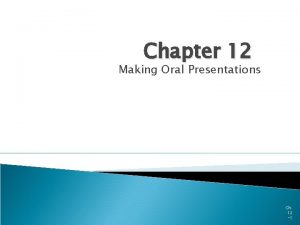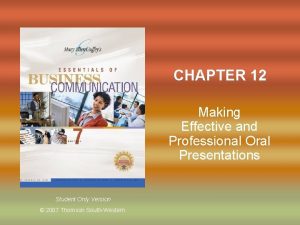Chapter 21 Making Oral Presentations Types of Presentations
















- Slides: 16

Chapter 21 Making Oral Presentations

Types of Presentations n n Impromptu Extemporaneous Scripted Memorized Chapter 21. Making Oral Presentations

Types of Audiences n n Clients and customers Colleagues in your organization Fellow professionals at technical conferences The public Chapter 21. Making Oral Presentations

Preparing an Oral Presentation n n Analyze the speaking situation. Organize and develop the presentation. Prepare the presentation graphics. Choose effective language. Rehearse the presentation. Chapter 21. Making Oral Presentations

Typical Time Allotment Task Time (20 minutes) Introduction 2 Body First major point Second major point 4 Third major point Conclusion 4 4 2 Questions 4 Chapter 21. Making Oral Presentations

Asg 7 Time Allotment Task Time (15 minutes) Introduction 3 Body Results/Findings 8 Conclusion 2 Questions 2 Chapter 21. Making Oral Presentations

Introducing a Presentation n n Introduce yourself and your group. State the title of your presentation. Explain the purpose of the presentation. State your main point. Provide an advance organizer. Chapter 21. Making Oral Presentations

Concluding a Presentation n Announce that you are concluding. n Summarize the main points. n Invite questions politely. Chapter 21. Making Oral Presentations

Presentation Graphics n More professional, persuasive, credible n Audiences remember graphic information better n Gives the audience a focus other than you! Chapter 21. Making Oral Presentations

Effective Graphics n Visibility n n Legibility n n Graphic should represent one idea Clarity n n Clear lines for drawings/diagrams Black on white shows best Legible typefaces sans-serifs such as Arial or Helvetica Simplicity n n 24 point type or larger Compress sentences into brief phrases 7 words/7 lines rule Point of the graphic should be clear Correctness Chapter 21. Making Oral Presentations

Effective Language for a Presentation n Oral presentations are more challenging than writing a document because: Listeners can't go back to listen again to something they didn't understand. n You must maintain your listeners' attention, even if they are hungry or tired or the room is too hot. n Use language to signal organization, summaries, transitions. n Chapter 21. Making Oral Presentations

Use Language to Signal Presentation Elements n n Advance organizers Summaries Transitions Guidelines for Using Memorable Language Involve the audience. n Refer to people, not to abstractions. n Use interesting facts, figures, and quotations. n Chapter 21. Making Oral Presentations

Giving an Oral Presentation n Calm your nerves. n Use your voice effectively. n n Volume, speed, pitch, articulation, fillers Use your body effectively. Chapter 21. Making Oral Presentations

Calming Your Nerves n n n You are much more aware of your nervousness than the audience is. Nervousness gives you energy and enthusiasm. After a few minutes, your nervousness will pass. Realize that you are prepared. Realize that the audience is there to hear you, not to judge you. Realize that your audience is made up of individual people who happen to be sitting in the same room. Chapter 21. Making Oral Presentations

Guidelines for Facing an Audience n n Maintain eye contact. Use natural gestures. Don’t block the audience’s view of the screen. Control the audience’s attention. Remember: the audience is more afraid of you than you are of them ; -} Chapter 21. Making Oral Presentations

Answering Questions n n You’re unsure everyone heard the question. You don’t understand the question. You get a question that you have already answered in the presentation. A belligerent member of the audience rejects your response and insists on restating his or her original point. Chapter 21. Making Oral Presentations
 Types of oral presentations
Types of oral presentations Developing oral and online presentation
Developing oral and online presentation Is making inference simply making a guess
Is making inference simply making a guess War making and state making as organized crime summary
War making and state making as organized crime summary Examples of oral traditions
Examples of oral traditions Craft of scientific presentations
Craft of scientific presentations Mental health presentation titles
Mental health presentation titles Worst powerpoint slide
Worst powerpoint slide What are multimedia presentations
What are multimedia presentations Lecture presentations for campbell biology
Lecture presentations for campbell biology Areas donde se utilizan las presentaciones electronicas
Areas donde se utilizan las presentaciones electronicas What are the three major types of verbal support
What are the three major types of verbal support Tok presentations
Tok presentations Best and worst powerpoint presentations
Best and worst powerpoint presentations Business presentations bristol
Business presentations bristol Setting up an ria
Setting up an ria Boardworks presentations
Boardworks presentations
